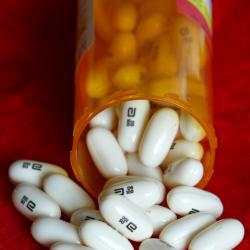Soon, your medicine cabinet might be as horribly noisy with alarms and reminders as your smartphone.
While food packaging at the supermarket has gotten smarter of late, like Heineken’s “Ignite” beer bottle, which lights up in response to music or cheering, medical packaging has mostly stayed the same, even as the drugs themselves get more high-tech. And let’s be honest, most bathroom cabinets are full of the medication of years past. As you emerge bleary-eyed from bed with a pounding headache, there’s a significant chance that you’ve failed to read the illegible small print and taken an aspirin that expired around the turn of the millennium.
Designers of smart medical packaging are working to counteract the unintended and sometimes dangerous results that can occur from the design of old-school blister packs and pill bottles. They’re also seizing the opportunity to use behavioral economics to prompt beneficial habits in patients.
In the past, packaging was simply intended to protect the medication (or to provide a handy surface for marketing messages). But technological advances allow new types of “active” and “smart” packaging to emerge.
You might be familiar with “active packaging,” which is intended to keep contents at their best. One example is the silica gel sachet that prevents mold growth by absorbing moisture and keeping your pills dry. Smart packaging, on the other hand, conveys information about the state of the product or provokes an interaction from the patient.
The Boston-based husband and wife team of computational biologist Gautam Goel and designer Kanupriya Goel came up with an idea for smart pharmaceutical packaging as they watched their aging grandparents struggle while looking through their medicine cabinets. With limited dexterity and eye troubles, plus the fact that English was their second language, they had great difficulty finding what they needed in a cabinet jammed with packs labeled in tiny print, the expiration date illegible or impossible to find. The Goels told me they were motivated to find a solution that would not be dependent on language literacy, or a user’s ability to find the expiration date on a medication bottle. They wanted to develop packaging that could clearly indicate when the contents are out of date.
The Goel’s Red Dot Award-winning design, called “Self Expiring,” works by using two separate layers of information: The top layer contains the standard medical text, and the bottom contains ink that will become visible through the first layer as the expiry date approaches. According to the Goels, the emerging ink displays universally recognized symbols such as the danger sign.
Equally important, they wanted the solution to be tamper-proof, so that it would help prevent illegal sale of expired medications, a growing problem in countries such as India.
The Goels say that there has been no immediate interest from pharmaceutical companies in employing their invention. They propose that a mandate from the FDA would be most useful in getting this fairly cheap smart packaging used across all medications. Down the line, they believe the self-expiring packaging could also be applied to to food, cosmetics, and any other product that has a fixed shelf life.
Other designers are attempting to use smart packaging not only to prevent medical harm to the patient, but also to help them take medicines correctly. A 2012 study published in the Annals of Internal Medicine showed that patient non-compliance with medical instructions, such as forgetting to take pills on time (or at all), was a growing and expensive problem in the United States. Approximately 50 percent of medication for chronic disease is not taken as prescribed, and this lack of compliance is estimated to cause 125,000 deaths a year and cost the U.S. health care system between $100 billion and $289 billion annually.
The Internet may prove to be part of the solution, too. Health care technology company Vitality’s GlowCap was one of the first smart pill packages to use an Internet-connected container cap to give information to the patient. A built-in sensor recognizes that a bottle has been open or closed, and an active reminder can be programmed to go off at pre-determined times. The GlowCap itself makes noises and glows with light. It can cause a wirelessly connected reminder light to pulsate and even send text notifications or dial your phone. The smart cap also even has a small button that, when pressed, notifies your pharmacy that you need a refill.
Vitality’s founder, David Rose, told me that in a study, heart disease patients who used GlowCap dramatically increased pill-taking compliance. According to Rose, the smart packaging works by using a combination of subtle behavioral nudges and by simply making the reminder information unavoidable. By sending compliance data to designated relatives and doctors, it provides the patient with social support, but also employs what psychologists call the “sentinel effect,” in which people comply with instructions because they know someone is watching.
The use of thin film or printed electronics in packaging is also growing. Pharmaceutical technology researchers at Information Mediary Corp. have brought their Med-ic Electronic Compliance Monitor (ECM) to market. The ECM uses a paper label with an electronic chip that can be stuck to a pill blister pack. Once attached, the reusable chip records pill removal dates and times and exports that data without the patient’s direct involvement. Smart pill blister packs can be programmed to report compliance information back over the Internet to the patient’s health care professionals, helping patients comply with medical instructions like with the GlowCap, and also ensuring that clinical trials collect accurate data.
As the market for smart medical packaging grows and becomes increasingly online, it will be vital to keep an eye on how well private medical data is protected. The leak or disclosure of personal medical information, even if it is just about your vitamin regimen, would be highly traumatic for most people. I doubt patients will be sharing their GlowCap results on social media any time soon.
